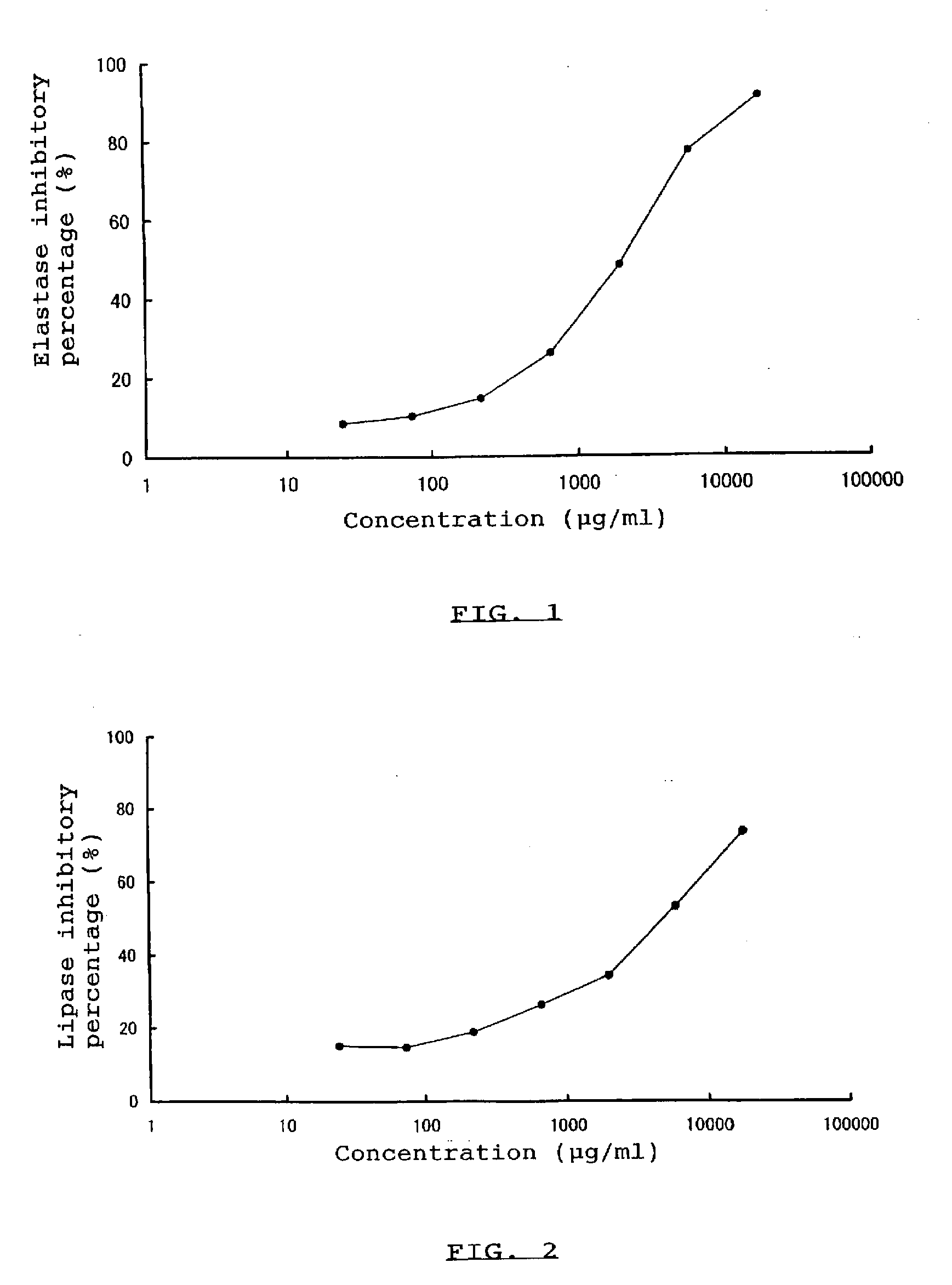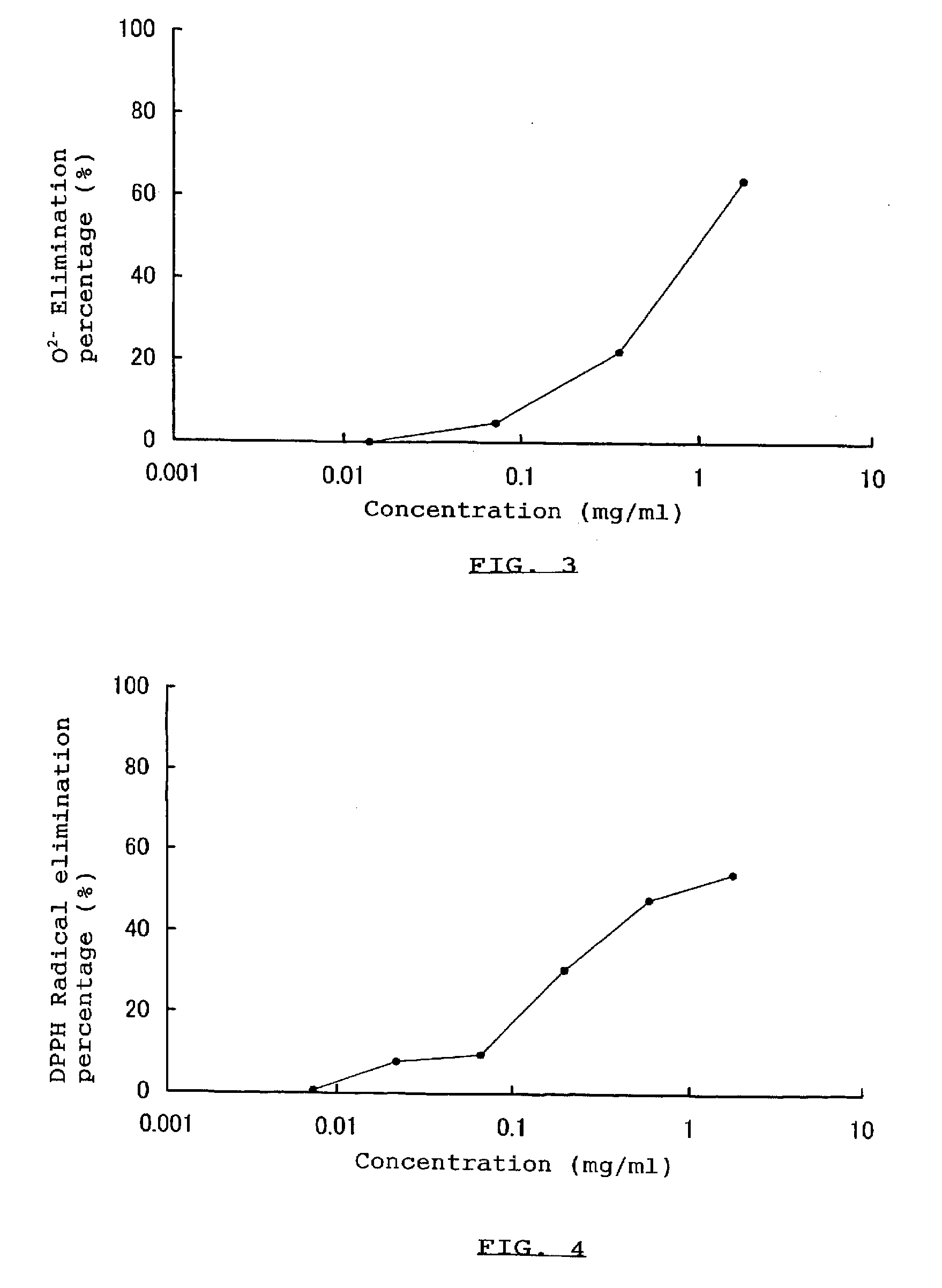Extract powder of indigo plant, and its preparation and uses
a technology of extract powder and indigo plant, which is applied in the directions of plant/algae/fungi/lichens ingredients, antiviral agents, antibacterial agents, etc., can solve the problems of gradual browning, difficulty in incorporating white cosmetic creams, and difficulty in incrementing the level of liquid extracts to be added to compositions, etc., to achieve easy handling, low cost, and low cost
- Summary
- Abstract
- Description
- Claims
- Application Information
AI Technical Summary
Benefits of technology
Problems solved by technology
Method used
Image
Examples
experiment 1
Relationship Between the Stability of Extract Powder of Indigo Plant and the DE of Partial Starch Hydrolyzate Used as a Base for Pulverization
[0070]There exists a problem that, when a liquid extract of indigo plant is dried alone or after admixed with sugar alcohol(s), the resulting dried product absorbs moisture and solidifies just after its processing even when placed under a relative humidity of 53% at 25° C. Using a partial starch hydrolyzate as a base for pulverization to pulverize a liquid extract of indigo plant, it was examined the influence of the partial starch hydrolyzate on the stability of the resulting extract powder of indigo plant. The following experiment was conducted to examine the influence of the DE of the partial starch hydrolyzate used as a base for pulverization.
[0071]In accordance with the method of the later described Example 1, one part by weight of a dried leaf of Polygonum tinctorium Lour. was pulverized, placed in a jacketed-tank, admixed with 24 parts ...
experiment 2
Relationship Between the Stability of Extract Powder of Indigo Plant and the Ratio of Partial Starch Hydrolyzate, which May Influence on the Stability, Used as a Base for Pulverization
[0076]It was conducted the following experiment to examine the relationship between the stability of extract powder of indigo plant and the ratio of partial starch hydrolyzate, which may influence on the stability, used as a base for pulverization.
[0077]The liquid extract of indigo plant prepared in Experiment 1 was used.
[0078]The solution containing a partial starch hydrolyzate with a DE of 1.5, 4.1, or 5.2, prepared in Experiment 1, was used as a base for pulverization. In addition to these, “DEXPEARL SD-20” with a DE of 1.4, a product name of a commercialized partial starch hydrolyzate containing cyclodextrin commercialized by Ensuiko Sugar Refining Co., Ltd., Tokyo, Japan, was used as a base for pulverization.
[0079]The above indigo plant extract was concentrated to give a 10-time strength and admix...
experiment 3
Influence of Extract Powders of Plants of the Family Polygonaceae on the Melanin Formation (Test 1 for In Vitro Whitening Effect)
[0082]The following experiment was conducted to examine the influence of extract powders of plants of the family Polygonaceae on the melanin formation. An extract powder of Polygonum tinctorium Lour., Japanese knotweed, buckwheat, or knotgrass as a plant of the family Polygonaceae was prepared for examining the influence on the melanin formation.
[0083]Using a dried leaf of Polygonum tinctorium Lour., Japanese knotweed, buckwheat, or knotgrass as a plant of the family Polygonaceae, extract powders of which were prepared. The extract powders of indigo plant were prepared by the method in later described Example 2. According to the same method as in Example 2, using a dried leaf of Japanese knotweed, buckwheat, or knotgrass in place of the one of Polygonum tinctorium Lour., extract powders of the above plants were prepared for use in the following experiment,...
PUM
| Property | Measurement | Unit |
|---|---|---|
| concentration | aaaaa | aaaaa |
| concentration | aaaaa | aaaaa |
| concentration | aaaaa | aaaaa |
Abstract
Description
Claims
Application Information
 Login to View More
Login to View More - R&D
- Intellectual Property
- Life Sciences
- Materials
- Tech Scout
- Unparalleled Data Quality
- Higher Quality Content
- 60% Fewer Hallucinations
Browse by: Latest US Patents, China's latest patents, Technical Efficacy Thesaurus, Application Domain, Technology Topic, Popular Technical Reports.
© 2025 PatSnap. All rights reserved.Legal|Privacy policy|Modern Slavery Act Transparency Statement|Sitemap|About US| Contact US: help@patsnap.com


